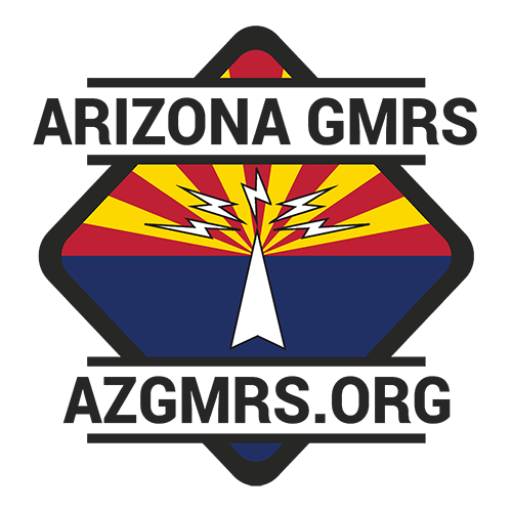
In the State of Arizona, ARIZONA GMRS promotes GMRS and two-way radio use by the general public. We also operate repeaters. Our primary repeater being 462.550 MHz atop White Tanks Mountain. We also have linked repeaters in Scottsdale, Phoenix, Mesa and Flagstaff. Many of our more than 500 members are also Amateur radio operators. If you would like more information, contact us here at www.azgmrs.org.

Phoenix 550 Coverage Map
CAMPING / HUNTING
HIKING
MOUNTAIN BIKING
OFF ROADING
FAMILY OUTINGS
TRAVEL CONVOYS
EMERGENCY COMMUNICATIONS
Facts about ARIZONA GMRS
- Family Friendly Communications Environment
- No Tests – License Covers Entire Family
- Multiple Repeaters / Wide Coverage
- Daily and Weekly Nets
- Experienced Training and Support
- Local 501c3 Non-Profit
- Arizona Emergency Services Group works with Amateur radio operators in emergency communications
What is GMRS radio?
GMRS stands for General Mobile Radio Service, using the same frequency band as FRS’s Family Radio Service (462-467 MHz). The difference is that GMRS radios have designated channels within those frequencies that aren’t available to FRS radios. Its use is covered by FCC Part 95, but requires a license to operate. According to the latest FCC rules, a personal GMRS license costs $35 and it’s good for 10 years. A license can be obtained online at https://www.fcc.gov/wireless/universal-licensing-system
How powerful is GMRS radio?
Handheld GMRS units can put out up to 5 Watts of power, although 4-Watt handhelds are more common. While mobile units, base stations and repeaters can use up to 50 Watts on most frequencies, they are restricted to 5 Watts when communicating on the upper FRS channels 1-7. The FRS/GMRS 467 Interstitial channels 8-14 are limited to hand-held only with a maximum of .5 Watts.
That means that a GMRS radio can have all the same capabilities as an FRS radio in addition to special channels that FRS can’t access, and more importantly, the option to extend the range of the product.
GMRS gear can include removable antennas, making it simple to use a handheld with a car mount or stationary antenna. Combined with the ability to use repeaters, GMRS can be used to communicate over considerable distances.
What is the difference between FRS and GMRS radios?
After May 18, 2017, FRS radios are limited to 2 Watts on channel 1-7 and channels 15–22. All 22 channels are shared with the GMRS radios. FRS radios come with fixed antennas, and cannot be legally modified to accommodate antennas or amplifiers. Different from GMRS, you don’t need a license to operate FRS radios.
In conclusion, what are the advantages of GMRS compared to FRS?
- Increased power, which means longer talking range
- Compatibility to FRS Radios
- Repeater capable, increasing range even further
- If you receive a GMRS license, any family member, regardless of age, can operate your GMRS stations and units within the licensed system without additional licenses. Yes, husband, wife, children, siblings, grandparents, aunts, uncles, and even in-laws.
Am I qualified to get a GMRS radio?
You may apply for a GMRS license if you are 18 years or older and not a representative of a foreign government. If you receive a license, any family member, regardless of age, can operate GMRS stations and units within the licensed system.
To learn more: https://www.fcc.gov/general-mobile-radio-service-gmrs
Okay, how can I get a license?
Simply go to the FCC website to apply for a license. Note that you must register for a FRN as a Domestic Individual. This allows you to do business (ie. pay) the FCC. Once you receive your FRN, which typically happens moments after submitting the form, you are able to fill out the online application and purchase your GMRS license directly from the FCC link as shown below.

